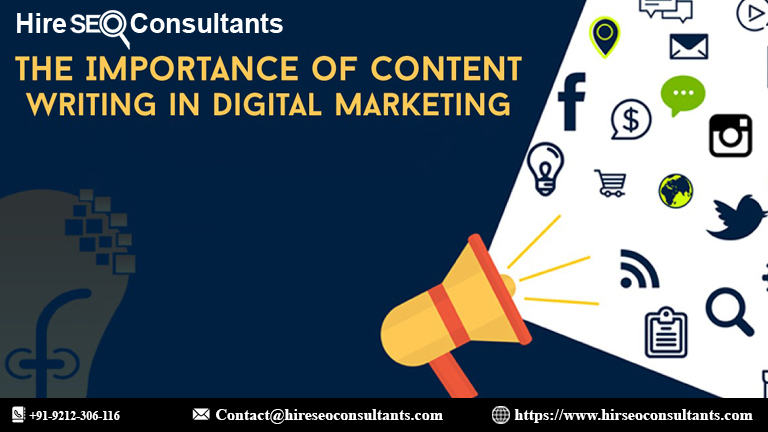How Can ChatGPT Be Used to Generate Copy That Incorporates Storytelling and Emotional Appeals to Connect With the Audience?
ChatGPT can be an invaluable tool for crafting compelling copy that weaves storytelling and emotional appeals to deeply connect with an audience. By leveraging its advanced language capabilities, ChatGPT can generate narratives that not only capture attention but also evoke emotions, fostering a stronger bond between the content and its readers. Through tailored prompts and iterative feedback, users can guide ChatGPT to create stories that resonate on a personal level, address audience pain points, and highlight aspirational outcomes. This approach ensures that the content is not only informative but also engaging and memorable, driving higher engagement and conversion rates.
In today's fast-paced digital landscape, businesses must find innovative ways to engage their audiences. One effective strategy is incorporating storytelling and emotional appeals into copywriting. Storytelling has the power to captivate, inspire, and connect with readers on a deeper level, while emotional appeals can drive action and foster brand loyalty. With advancements in artificial intelligence, tools like ChatGPT have emerged as powerful allies for marketers and copywriters. This article explores how ChatGPT can be harnessed to generate compelling copy that incorporates storytelling and emotional resonance, ultimately enhancing audience connection.
Understanding the Power of Storytelling in Copywriting
Storytelling is a fundamental aspect of human communication. It has been used for centuries to convey messages, share experiences, and create connections. In copywriting, storytelling serves several critical purposes:
Creating Relatability
Stories allow audiences to see themselves in the narrative. When people can relate to a story, they are more likely to engage with the content. By sharing experiences or challenges similar to those of the target audience, copywriters can foster a sense of connection.
Eliciting Emotions
Stories evoke emotions that can influence decision-making. Emotional appeals can range from joy and nostalgia to empathy and urgency. By tapping into these feelings, copywriters can create a memorable impact and encourage readers to take action.
Enhancing Memorability
Stories are inherently more memorable than abstract facts or figures. When a message is embedded within a narrative, it sticks in the minds of readers. This memorability is essential for brand recognition and recall.
Driving Action
Effective storytelling motivates readers to take action. Whether it's making a purchase, signing up for a newsletter, or sharing content, a well-crafted story can prompt the desired response from the audience.
The Role of Emotional Appeals in Copywriting
Emotional appeals are integral to effective copywriting. They tap into the feelings and desires of the audience, creating a connection that goes beyond rational arguments. Emotional appeals can take various forms, including:
Empathy
Empathy is the ability to understand and share the feelings of others. By demonstrating empathy in copy, marketers can show their audience that they genuinely understand their struggles and aspirations. This emotional connection can lead to increased trust and loyalty.
Nostalgia
Nostalgia evokes fond memories and can create a sense of comfort and familiarity. By incorporating nostalgic elements into copy, marketers can evoke positive emotions and create a stronger connection with their audience.
Fear of Missing Out (FOMO)
FOMO is a powerful motivator that drives individuals to take action. By highlighting limited-time offers or exclusive opportunities, marketers can create a sense of urgency that encourages immediate action.
Joy and Inspiration
Stories that inspire joy and hope resonate with audiences and encourage them to envision a better future. This positive emotional appeal can create a lasting impact and motivate readers to engage with a brand.
Leveraging ChatGPT for Storytelling and Emotional Appeals
ChatGPT, an advanced language model developed by OpenAI, can assist copywriters in generating engaging and emotionally resonant copy. By harnessing its capabilities, marketers can streamline the copywriting process and enhance their storytelling efforts. Here are several ways to leverage ChatGPT for storytelling and emotional appeals:
Generating Creative Story Ideas
ChatGPT can help brainstorm creative story ideas tailored to the target audience. By inputting key themes, target demographics, and desired emotional tones, users can receive multiple story concepts that resonate with their audience. This creative collaboration can save time and spark inspiration.
Crafting Engaging Narratives
Once a story idea is established, ChatGPT can assist in crafting the narrative. The model can generate compelling plotlines, character development, and dialogue that align with the brand's messaging. By providing specific prompts, users can guide the model to create stories that reflect their unique voice and style.
Incorporating Emotional Appeals
ChatGPT can help identify and weave emotional appeals into the narrative. By specifying the desired emotional tone—such as empathy, nostalgia, or inspiration—users can prompt the model to infuse the copy with emotionally resonant elements. This ensures that the resulting narrative not only tells a story but also evokes the intended feelings.
Creating Relatable Characters
Relatable characters are essential for effective storytelling. ChatGPT can assist in developing characters that resonate with the audience. By providing details about the target demographic, users can prompt the model to generate character profiles that reflect the audience's experiences, desires, and challenges.
Structuring the Narrative Arc
A well-structured narrative arc is crucial for engaging storytelling. ChatGPT can help outline the key components of the story, including the introduction, rising action, climax, falling action, and resolution. By ensuring a cohesive structure, marketers can create narratives that capture attention and maintain engagement throughout.
Refining Tone and Style
Consistency in tone and style is essential for brand identity. ChatGPT can help refine the narrative's tone to align with the brand's voice. By providing examples of existing copy, users can guide the model to produce content that maintains a cohesive and authentic brand identity.
Optimizing for SEO
Incorporating SEO strategies into copywriting is vital for visibility. ChatGPT can assist in generating SEO-friendly content by suggesting relevant keywords and phrases that align with the story. This ensures that the narrative not only engages readers but also ranks well in search engines.
Adapting Content for Different Platforms
Different platforms require tailored content to engage audiences effectively. ChatGPT can help modify narratives for various channels, such as social media, email campaigns, or website copy. By adjusting the tone, length, and format, marketers can ensure their stories resonate across platforms.
Improving Efficiency in the Copywriting Process
Using ChatGPT can streamline the copywriting process, allowing marketers to focus on strategy and creative direction. By automating certain aspects of content generation, copywriters can save time while still producing high-quality narratives that connect with their audience.
Best Practices for Using ChatGPT in Storytelling and Emotional Appeals
While ChatGPT is a powerful tool, there are best practices to follow to ensure its effectiveness in storytelling and emotional appeals:
Provide Clear Prompts
To get the best results from ChatGPT, users should provide clear and specific prompts. The more detailed the input, the more relevant and tailored the generated content will be. This helps guide the model in producing narratives that align with the desired outcome.
Iterate and Refine
ChatGPT is a tool that benefits from iteration. Users should review and refine the generated content to ensure it aligns with their brand's voice and messaging. Making adjustments can enhance the narrative's impact and emotional resonance.
Experiment with Different Approaches
To discover what resonates best with the audience, marketers should experiment with different storytelling techniques and emotional appeals. ChatGPT can assist in generating variations of a narrative, allowing users to compare and choose the most effective approach.
Combine Human Insight with AI-generated Content
While ChatGPT is a powerful tool, it should complement rather than replace human creativity and insight. Marketers should leverage their understanding of their audience and industry trends to guide the storytelling process. Combining AI-generated content with human expertise leads to more authentic and effective narratives.
Continuously Analyze Audience Feedback
Monitoring audience feedback is essential for improving storytelling efforts. Marketers should analyze engagement metrics, comments, and responses to understand what resonates with their audience. This feedback can inform future storytelling strategies and adjustments to AI-generated content.
Ethical Considerations
When using AI-generated content, ethical considerations should be kept in mind. Marketers should ensure that the narratives produced do not misrepresent facts or manipulate emotions in harmful ways. Maintaining transparency and authenticity is key to building trust with the audience.
Incorporating storytelling and emotional appeals into copywriting is essential for connecting with audiences in today's competitive landscape. ChatGPT provides a valuable resource for marketers and copywriters looking to generate compelling narratives that resonate with their audience. By leveraging its capabilities, businesses can create relatable stories, evoke emotions, and drive action. By following best practices and combining AI-generated content with human insight, marketers can harness the power of storytelling to enhance their brand's connection with its audience.
FAQs
How can ChatGPT help with storytelling in copywriting?
ChatGPT can assist in generating creative story ideas, crafting engaging narratives, incorporating emotional appeals, and refining tone and style for cohesive messaging.
What types of emotional appeals can be used in storytelling?
Emotional appeals can include empathy, nostalgia, fear of missing out (FOMO), and inspiration, each of which can enhance the connection with the audience.
Can ChatGPT generate content for different platforms?
Yes, ChatGPT can help modify narratives for various platforms, ensuring that the content resonates with audiences across social media, email campaigns, and websites.
How should I provide prompts to ChatGPT for the best results?
Providing clear and specific prompts with detailed information about the desired outcome helps guide ChatGPT in generating relevant and tailored content.
What role does human insight play in using ChatGPT for storytelling?
Human insight is crucial for guiding the storytelling process, ensuring authenticity, and combining creativity with AI-generated content to produce effective narratives.
Get in Touch
Website – https://www.webinfomatrix.com
Mobile - +91 9212306116
Whatsapp – https://call.whatsapp.com/voice/9rqVJyqSNMhpdFkKPZGYKj
Skype – shalabh.mishra
Telegram – shalabhmishra
Email - info@webinfomatrix.com
What's Your Reaction?





















